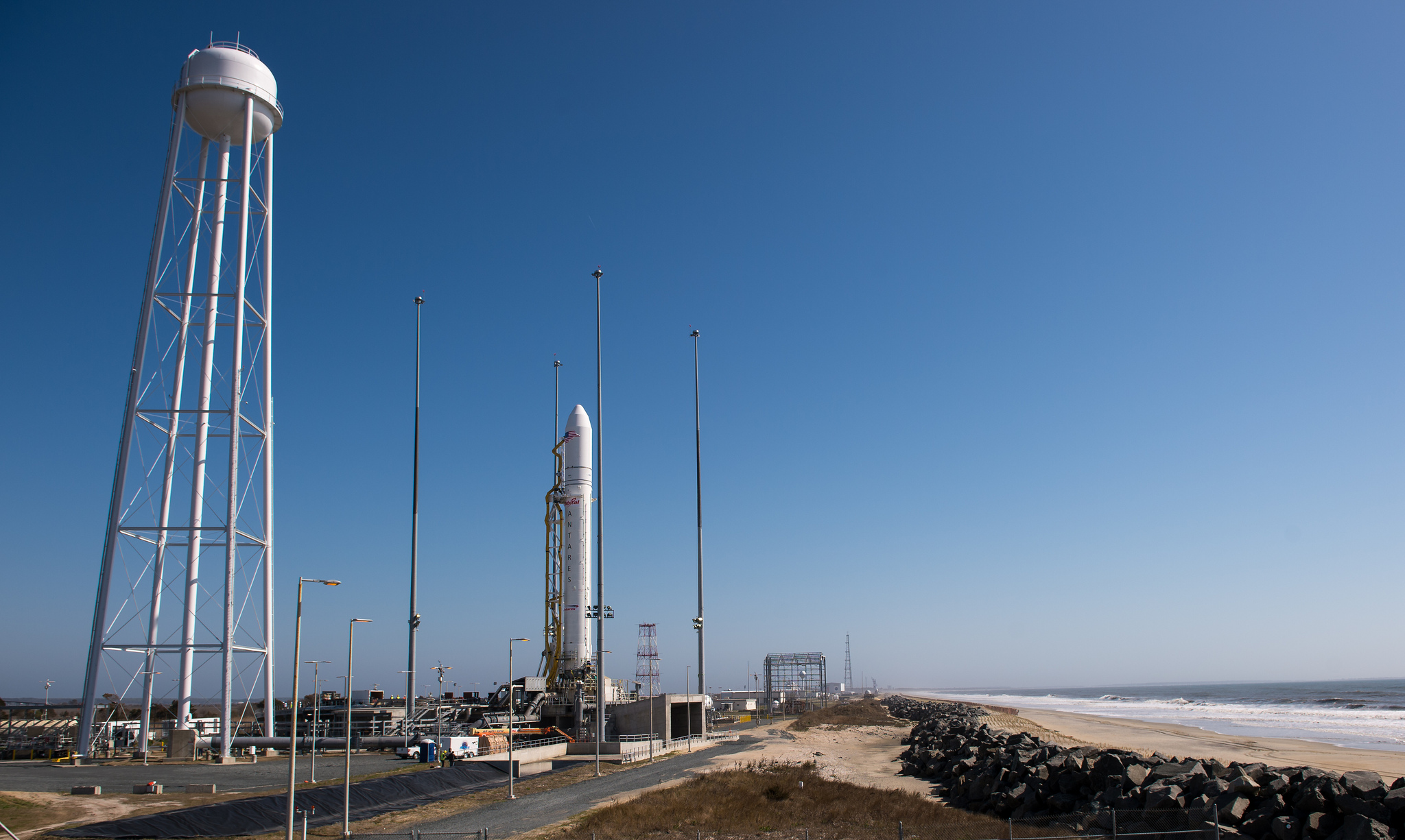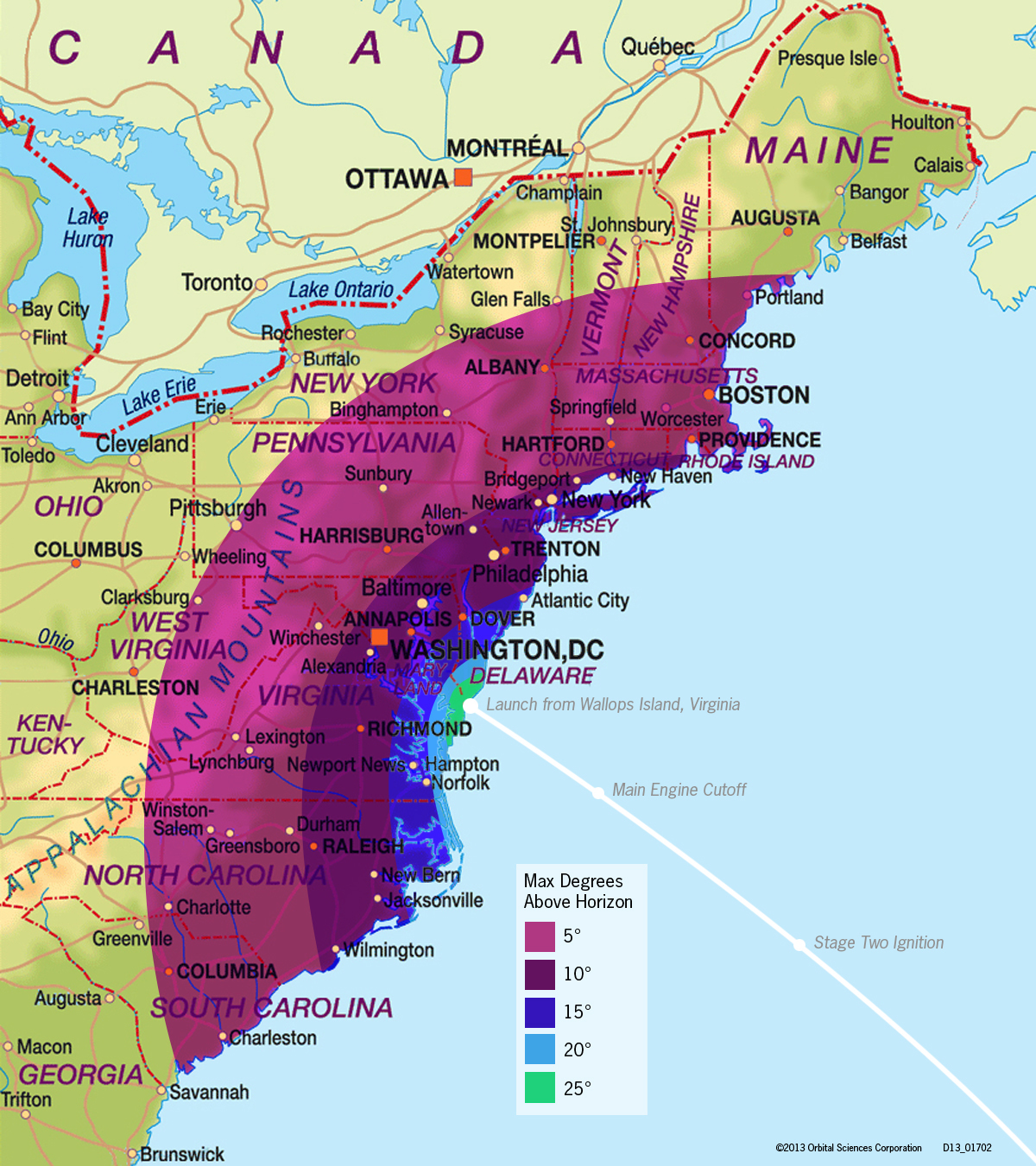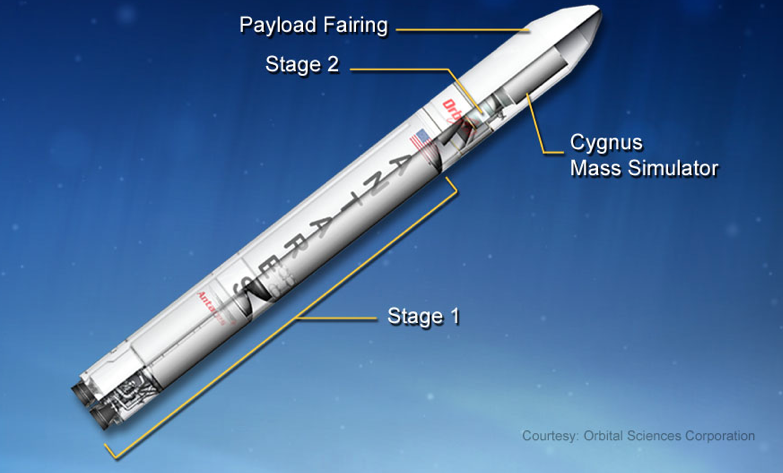New Private Rocket Antares: 5 Surprising Facts

UPDATE: Orbital Sciences' first Antares rocket is now set to launch on Saturday, April 20, at 5 p.m. ET. See our latest story here: New Private Rocket Launching on 1st Flight: Watch It Live
A new private rocket is set to launch into space for the first time today (April 17), potentially marking a leap forward for American commercial spaceflight.
Orbital Sciences Corp.'s unmanned Antares rocket is slated to blast off from Virginia's Mid-Atlantic Regional Spaceport (MARS) located at NASA's Wallops Flight Facility at 5 p.m. EDT (2100 GMT) Wednesday, helping pave the way for eventual cargo missions to the International Space Station.
Orbital signed a $1.9 billion deal with NASA to fly eight unmanned supply missions using Antares and the company's robotic Cygnus spacecraft. Cygnus and Antares could be launched together on a demonstration mission to the space station as early as June, company officials say. [How to see the Antares Rocket Launch]
Here are five things you might not have known about Antares:
Antares' engines were made for the moon
The Antares rocket's first stage uses 2 Aerojet AJ26 rocket engines fueled by liquid oxygen and kerosene (RP-1). The AJ26 is based on the NK-33 engine, which was originally developed to launch Russia's giant N-1 moon rocket in the 1960s.
Breaking space news, the latest updates on rocket launches, skywatching events and more!
N-1 was the Soviet answer to America's Saturn V rocket, used to launch astronauts to the moon during the space agency's Apollo program. The Soviet heavy-lifting rocket, however, was never launched successfully.
It is the largest rocket ever to launch from Virginia
Wallops Flight Facility on Virginia's Eastern Shore has traditionally been NASA's launching ground for small sounding rockets and high-altitude balloon missions, but Antares' launch from MARS is helping broaden the site's scope.
Engineers refurbished an old launch pad to accommodate Antares, whose launch today is perhaps the highest-profile liftoff from Wallops since its establishment in 1945. Most big manned and unmanned American missions have historically been run from Florida's Cape Canaveral, including the space station cargo launches of Orbital's competitor, SpaceX.
Weather permitting, today's Antares launch could be seen as far south as Charleston, S.C. and as far north as Portland, Maine. The rocket should be visible as a bright streak of light in Washington, D.C., assuming clouds doesn't get in the way.
Antares' name has a long space legacy
The rocket's name comes from a long cosmic legacy.
"Antares" is the name of a red supergiant star in the constellation Scorpius. It's one of the largest stars ever found, with a diameter several hundred times that of the sun. The star is about 600 light-years from Earth, and is among the top 20 brightest stars in the night sky.
The Apollo Lunar Module used during the Apollo 14 mission was also named "Antares." The module brought a two-person crew down to the surface of the moon in 1971, making the "most precise landing to date," according to NASA reports.
Orbital Sciences is a key player in missile defense
The company that developed Antares has also executed about 50 major launches for the U.S. Missile Defense Agency, the Air Force and the Navy to create a robust missile defense system in the United States.
Orbital Sciences creates target vehicles used in simulations to test the missile defense systems. The firm also manufactures "interceptor boosters" that can cut off possible missile launches aimed at the country.
This test flight will deliver tiny satellites into orbit
The Cygnus mass simulator being flown on Antares today will deploy a few tiny satellites for a commercial customer and NASA before burning up harmlessly in the Earth's atmosphere.
The satellite payload includes the Dove-1 nanosatellite for a commercial client and two versions of NASA Ames Research Center's Phonesats, which are about the size of a coffee cup.
Editor's note: If you snap a great photo of Orbital's Antares rocket launch that you'd like to share for a possible story or image gallery, send photos, comments and your name and location to Managing Editor Tariq Malik at spacephotos@space.com.
Visit SPACE.com for complete coverage of the Antares rocket launch.
Follow Miriam Kramer on Twitter and Google+. Follow us on Twitter, Facebook and Google+. Original article on SPACE.com.

Miriam Kramer joined Space.com as a Staff Writer in December 2012. Since then, she has floated in weightlessness on a zero-gravity flight, felt the pull of 4-Gs in a trainer aircraft and watched rockets soar into space from Florida and Virginia. She also served as Space.com's lead space entertainment reporter, and enjoys all aspects of space news, astronomy and commercial spaceflight. Miriam has also presented space stories during live interviews with Fox News and other TV and radio outlets. She originally hails from Knoxville, Tennessee where she and her family would take trips to dark spots on the outskirts of town to watch meteor showers every year. She loves to travel and one day hopes to see the northern lights in person. Miriam is currently a space reporter with Axios, writing the Axios Space newsletter. You can follow Miriam on Twitter.


